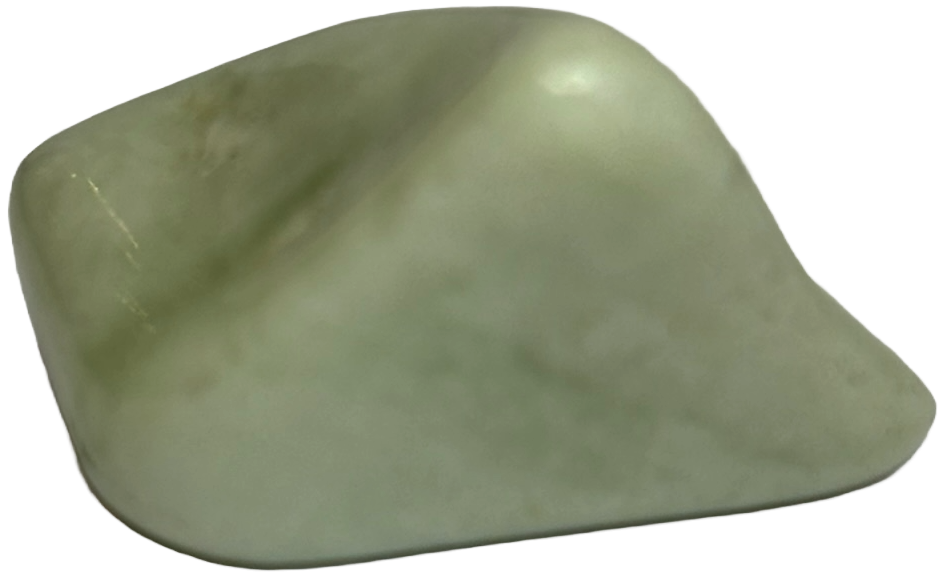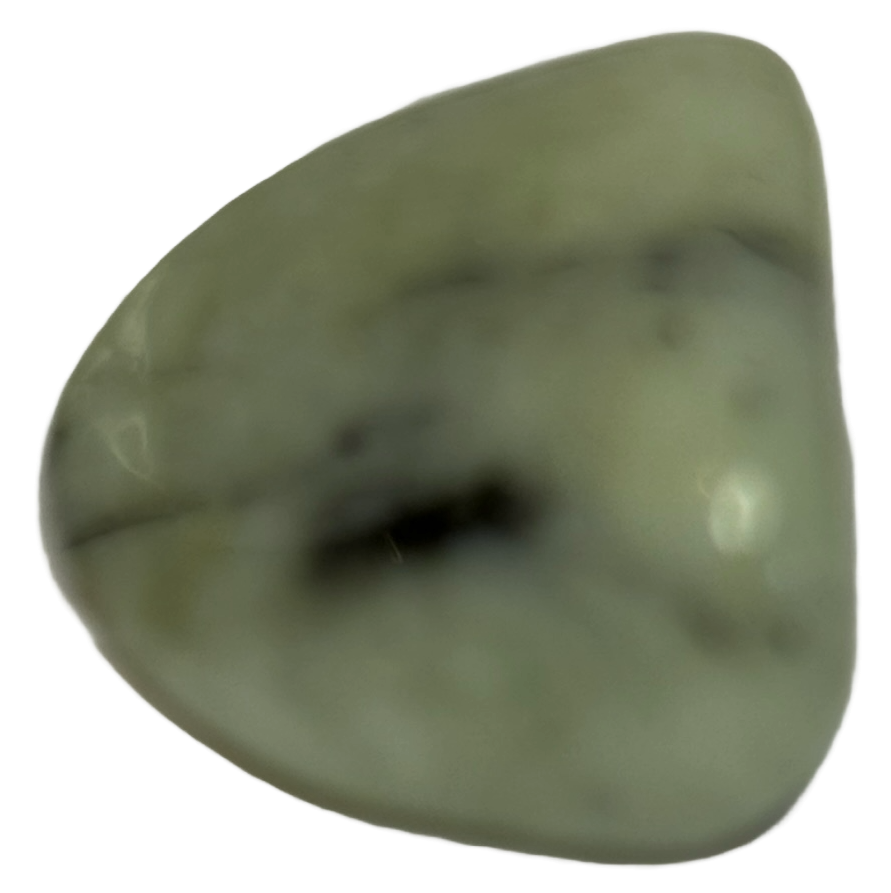
Serpentine jade, also known as bowenite and antigorite, is a unique and captivating mineral that has intrigued collectors, historians, and crystal enthusiasts for generations.
Origins of Its Name and Alternate Names
The name “serpentine jade” reflects its serpentine, snake-like patterns and smooth, jade-like appearance. Although not a true jade, it has long been referred to as “jade” due to its attractive, translucent green hues and polished finish. The stone is also known as bowenite and antigorite in various regions, with each term highlighting subtle differences in composition and texture. These alternate names not only underline its visual similarity to traditional jade but also its unique formation processes that result in the distinctive, flowing patterns reminiscent of a serpent’s skin.
Composition and Physical Characteristics
Serpentine jade is primarily composed of one or more minerals from the serpentine group, which are magnesium-rich silicates formed under conditions of low-grade metamorphism. Its chemical composition typically includes magnesium, silicon, and water, contributing to its soft, waxy luster and smooth texture when polished. The stone predominantly displays shades of green, although variations can include hints of yellow, brown, or grey. The naturally occurring patterns, often flowing and undulating, add to its charm, ensuring that each piece is distinct in its marbling and overall appearance.
Varieties and Locations
Significant deposits of serpentine jade are found around the globe, with notable sources in China, Canada, the United States, and various parts of Europe. The material from China, in particular, is highly prized for its rich, uniform green tones and fine texture, often used as a more affordable alternative to true jade. In North America, serpentine jade may exhibit diverse patterns and colour variations influenced by local geological conditions, resulting in a range of specimens that appeal to both gem collectors and artisans.
Archaeological and Significant Finds
Historically, serpentine jade has been discovered in archaeological sites where it was valued not only for its beauty but also for its symbolic and utilitarian qualities. In ancient China, for instance, this stone was used in carvings, amulets, and ceremonial objects, symbolising longevity, prosperity, and protection. Intricately carved artefacts made from serpentine jade provide insights into the craftsmanship of past civilizations and underscore its longstanding cultural significance.
Historical and Current Usage
Throughout history, serpentine jade has been employed in various applications. Its resemblance to true jade made it popular for decorative carvings, jewellery, and ritual objects. In modern times, serpentine jade continues to be admired for its aesthetic appeal and is used in jewellery, sculpture, and home décor. Its affordability compared to genuine jade has further cemented its status among collectors and artisans who value its unique patterns and soothing green tones.
Interesting Facts, Folklore, Legends, and Tales
Serpentine jade is steeped in folklore and legend. Many cultures believe that the flowing patterns of the stone symbolise the continuous journey of life, representing transformation and rebirth. Legends often attribute protective qualities to the stone, with tales of its ability to ward off evil spirits and bring good fortune. Its snake-like appearance has inspired comparisons to the wisdom and mystique of serpents, creatures revered for their deep connection to the earth and natural cycles.
Mystical Healing Properties
In crystal healing, serpentine jade is celebrated for its purported ability to promote emotional balance, encourage spiritual growth, and provide grounding energy. Healers believe that its gentle energy can help alleviate stress and anxiety, making it an effective aid during meditation and introspection. The stone is also said to enhance inner wisdom and foster a deeper connection with nature, although these benefits are rooted in metaphysical traditions rather than scientific evidence.
Links with Astrology and the Zodiac
Astrologically, serpentine jade is often associated with the Earth element, making it particularly beneficial for zodiac signs such as Taurus and Virgo, known for their practicality and connection to nature. Its calming, stabilising energy is believed to balance the sometimes turbulent influences of other planetary forces, providing clarity and focus to those who work with it. The stone’s natural beauty and grounding properties are thought to complement the innate traits of these signs.
The Chakra System
Within the chakra system, serpentine jade is most commonly linked to the Heart Chakra, which governs love, compassion, and emotional balance. Its soothing green tones are believed to encourage feelings of calm and promote emotional healing. Additionally, some practitioners associate it with the Root Chakra, recognising its grounding properties that help stabilise one’s energy, fostering a sense of security and well-being.
Birthstone and Wedding Anniversary Connections
While serpentine jade is not traditionally recognised as a birthstone, its serene green hues and symbolic associations make it an appealing alternative for those born in months linked to the colour green, such as May. Furthermore, its associations with growth, renewal, and protection render it a meaningful gift for wedding anniversaries, particularly for celebrating long-lasting, evolving relationships. As a wedding present, serpentine jade symbolises enduring love and the beauty that emerges from shared experiences over time.

Serpentine jade
Serpentine Jade harmonises body and spirit, supporting emotional healing, energetic renewal, and gentle grounding. A soothing stone for balance and vitality.
